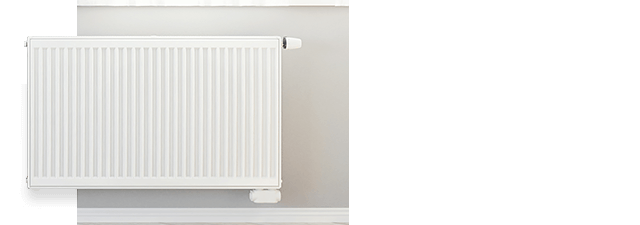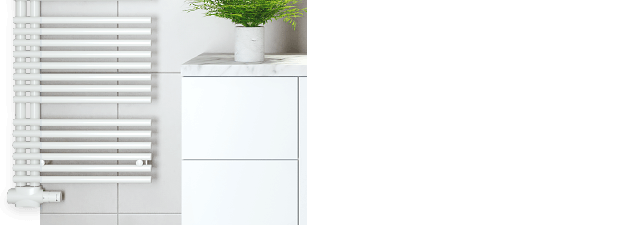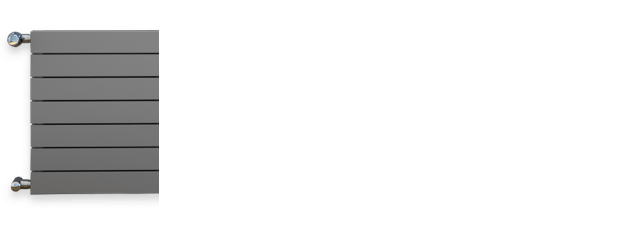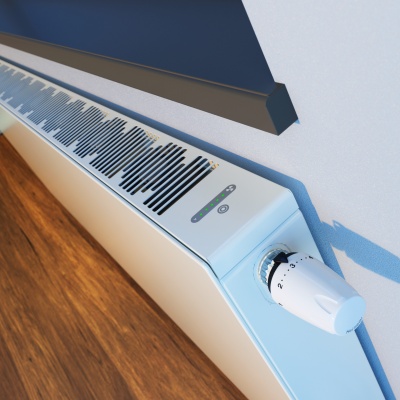Why Is My Radiator Not Heating?
21. 5. 2025
What to Do When a Radiator Is Not Heating?
Have you discovered that your radiator is not heating up? If the rest of your home is warm, you may be facing a local issue—one that can usually be fixed without the help of a professional. The key is to correctly identify the cause and proceed step by step.
Radiator Not Heating Up at All or Only Partially? It can happen that one radiator doesn’t heat up while the others work just fine. In some cases, the radiator may only heat partially—such as just the bottom part, or just the top.
Possible Reasons Why Your Radiator Is Not Heating
One of the most common reasons for a radiator not heating is the presence of air in the system. Air blocks the smooth flow of hot water and reduces the performance of the radiator. It typically collects at the highest points of the heating system. In the case of a bottom-pipe layout, this often means in the radiators themselves. This is particularly typical after refilling the system or following a long period of downtime.
Another cause may be a closed or blocked valve. If the radiator valve isn’t fully open, or if the thermostatic head is stuck, hot water cannot flow into the radiator. This may also be accompanied by low pressure in the heating system—typically below 1 bar—which leads to poor circulation, especially in radiators further away from the boiler.
In older systems or new but unflushed systems, deposits and dirt can restrict the flow. In severe cases, a radiator can become partially or fully clogged, requiring professional cleaning or replacement. In other situations, the furthest radiator in the circuit may stop heating, which often indicates low pump pressure or air in the pipework.
What to Do When a Radiator Is Not Heating?
1. Check the Valve
Make sure the valve is fully open. Turn the thermostatic head counterclockwise until you feel resistance. Sometimes the valve is partially closed or the head is stuck.
2. Bleed the Radiator
Use a bleed key or a flat-head screwdriver. Place a container and cloth beneath the bleed valve. Loosen the valve and wait until air hisses out and a steady stream of water flows. Then close the valve. This step often helps when the radiator is not heating completely. You can read more about how to bleed a radiator in our previous article.
3. Check the Thermostatic Head
Remove the thermostatic head and check if the pin inside the valve moves freely. If it’s rusted or stuck, gently tap it or apply lubricant to loosen it.
4. Check the System Pressure
Look at the pressure gauge on the boiler. The ideal pressure is between 1.2 and 2 bars. If the pressure is too low, top up the water in accordance with the manufacturer’s instructions for your heating equipment. Low pressure is a common reason why the last radiator in the system may not heat.
5. Check if the Problem Affects the Whole System
If several radiators are not heating, the issue might be system-wide. A faulty circulation pump or poor regulation could affect the entire heating system. In such cases, it’s best to contact a professional technician.
How to Prevent Heating Problems
The best way to avoid heating problems is prevention. We recommend that you zo bleed radiators and the entire system regularly—ideally before every heating season, check the system pressure and have the system professionally flushed if necessary
This will help you avoid a situation where the radiator does not heat up just when you need it most. If you encounter recurring problems or own old sectional radiators, consider replacing them. If you are considering a radiator replacement, the ideal solution is the RADIK KLASIK - R model, which is specifically designed for replacing old radiators without the need to modify the existing pipe layout.
For low-temperature systems (such as heat pumps), we recommend modern RADIK V-POWER radiators with integrated fans, which significantly increase heating performance even at lower water temperatures.
Expert Advice in Conclusion
If you discover that your radiator is not heating, there’s no need to panic. In most cases, it’s a problem that can be fixed in just a few minutes with basic maintenance. However, if the problem persists or keeps coming back, it’s best to consult a professional.
At KORADO, we offer not only a wide range of radiators suitable for every type of system but also technical support and custom-made solutions. Need help choosing the right product? Contact our team or visit www.korado.com where you can find contacts, manuals, and recommended partners or dealers.





